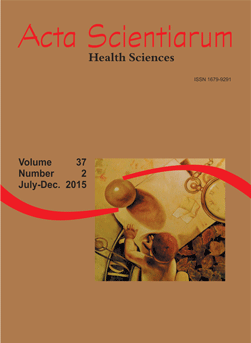<b>Prevalence of variant hemoglobins and thalassemias in a maroon community in Sergipe, Brazil
Resumo
Current analysis investigates the sickle-cell syndrome among members of a maroon community (comunidade quilombola) in the state of Sergipe, Brazil. The entire population, comprising five hundred and ninety-three people, was screened. Blood samples were collected from 318 people, aged between six months and fifty years, who underwent a solubility test to assess the presence of HbS, followed by Sickle-Cell Test to confirm its presence. Results revealed that 2.2% of the three hundred and eighteen people tested have hemoglobin HbS in their blood; 57% have type HbAS and 43% have a combination between thalassemia and heterozygous with a variable percentage of HbS ranging between 24.9 and 37.9%. Blood sampling revealed that only five out of the 318 people belonged to different families. Results are highly relevant for public health policies on the sickle-cell syndrome and its management.
Downloads
DECLARAÇÃO DE ORIGINALIDADE E DIREITOS AUTORAIS
Declaro que o presente artigo é original, não tendo sido submetido à publicação em qualquer outro periódico nacional ou internacional, quer seja em parte ou em sua totalidade.
Os direitos autorais pertencem exclusivamente aos autores. Os direitos de licenciamento utilizados pelo periódico é a licença Creative Commons Attribution 4.0 (CC BY 4.0): são permitidos o acompartilhamento (cópia e distribuição do material em qualqer meio ou formato) e adaptação (remix, transformação e criação de material a partir do conteúdo assim licenciado para quaisquer fins, inclusive comerciais.
Recomenda-se a leitura desse link para maiores informações sobre o tema: fornecimento de créditos e referências de forma correta, entre outros detalhes cruciais para uso adequado do material licenciado.























5.png)







